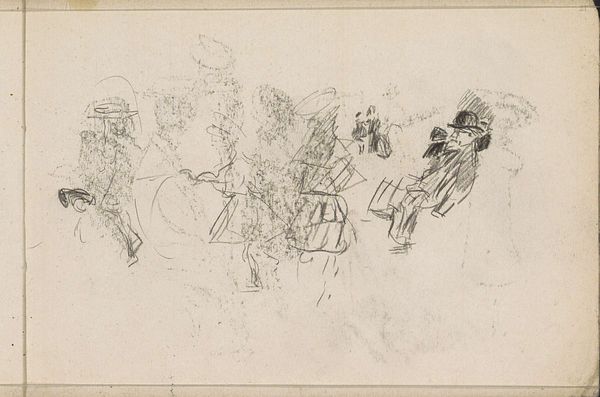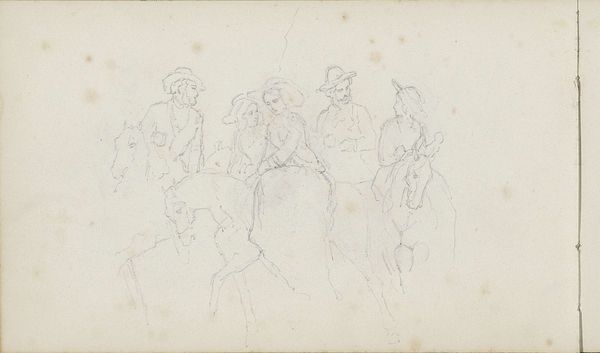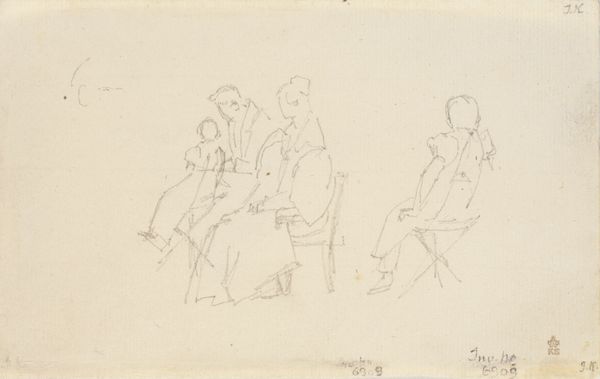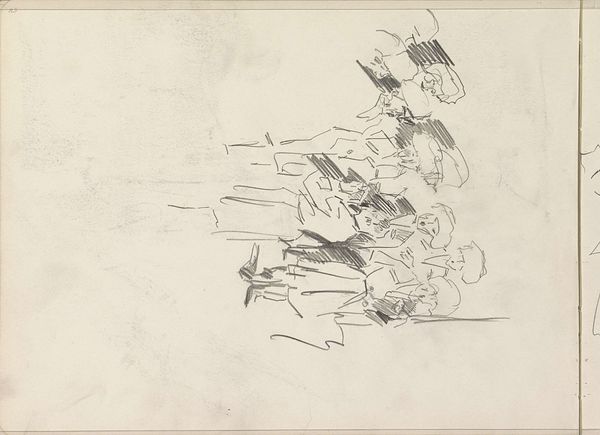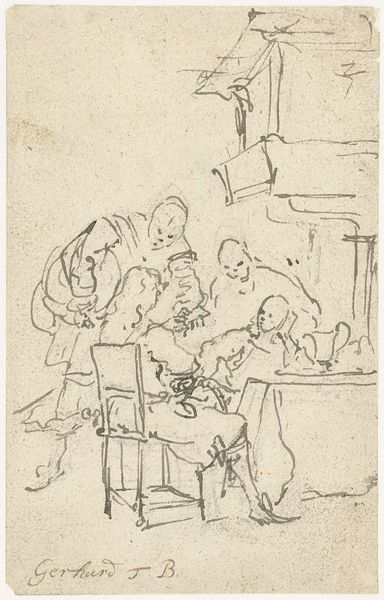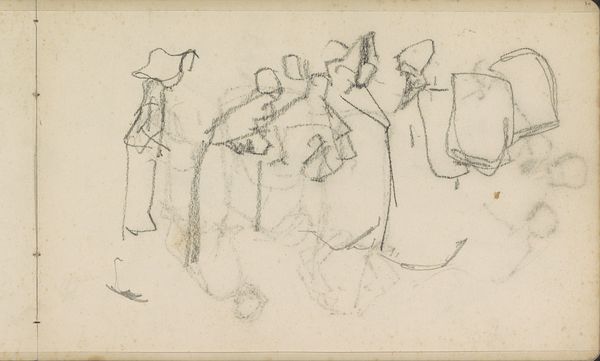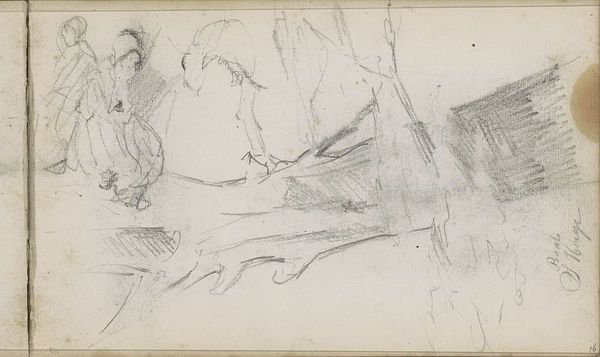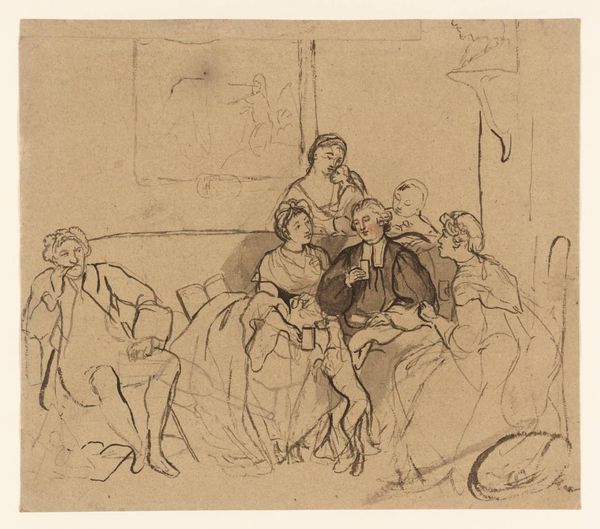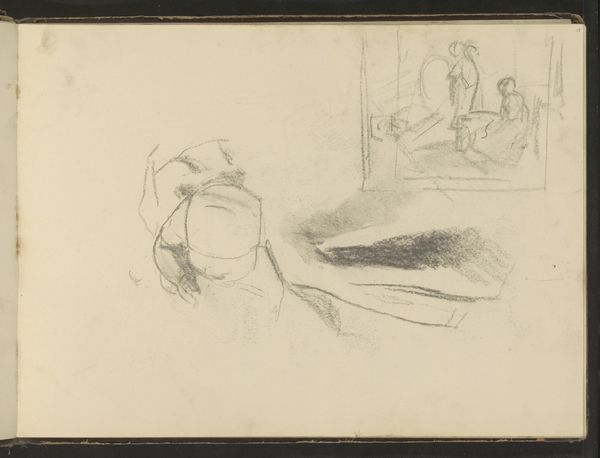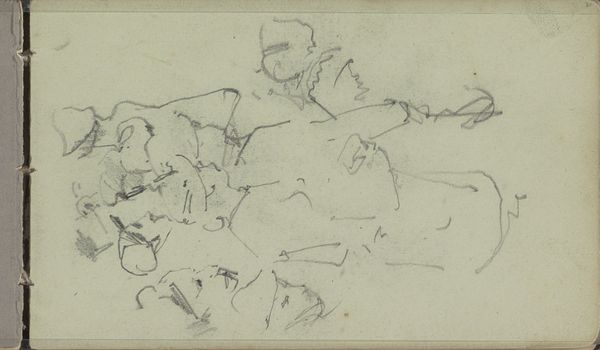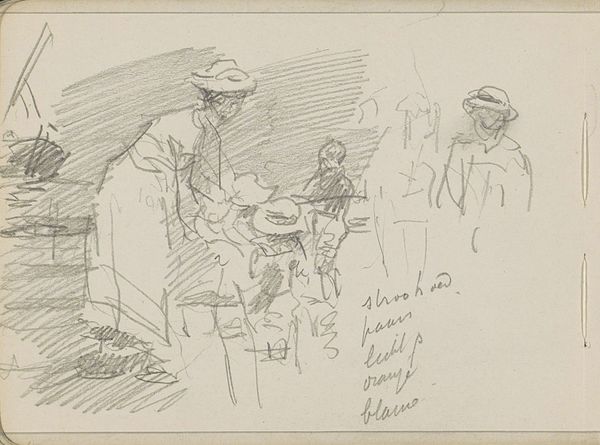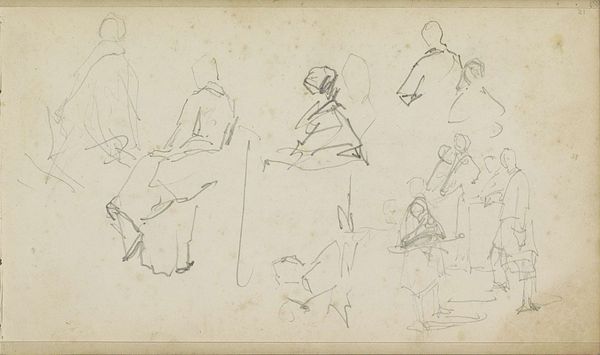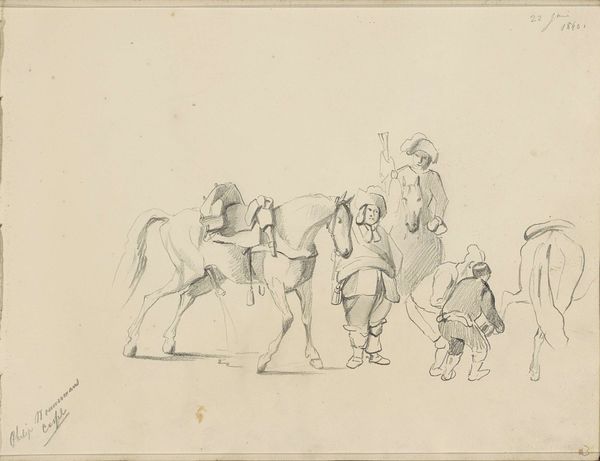
drawing, paper, pencil
#
portrait
#
drawing
#
impressionism
#
pencil sketch
#
paper
#
personal sketchbook
#
sketch
#
pencil
#
sketchbook drawing
Copyright: Rijks Museum: Open Domain
Editor: Here we have George Hendrik Breitner’s pencil drawing, “Ruiters, mogelijk cavaleristen,” which translates to “Riders, possibly cavalrymen,” made sometime between 1881 and 1883. It's a quick sketch on paper. The interesting part about the artwork is that the line work creates motion with these figures; what catches your eye in this work? Curator: Formally, it’s the contrast between the suggestive, almost ethereal rendering of the figures and the decisive, firm strokes defining the riders' implied actions that arrests my attention. The work demands that we consider the semiotic weight of the sketch itself, particularly in its unfinished state. Editor: Semiotic weight? Curator: Yes. What does the incompleteness communicate? Consider the implications of its medium – humble pencil on paper – against the grandeur implied by "cavalrymen." How does the sketch’s raw, almost ephemeral quality influence our perception of these military figures? Editor: I see. So you are saying that it seems almost intentionally not complete and immediate. Curator: Precisely. Notice the strategic placement of shading which suggests depth while the stark whiteness implies absence. Are these cavalrymen solid, grounded individuals or fleeting figures of a quickly receding past? Editor: The absence also invites me to be more of a participant in experiencing the sketch, compared to seeing a completed and refined work of art. Curator: Indeed. Breitner deftly manipulates the tension between presence and absence, demanding the viewer to co-create meaning, emphasizing the dynamism inherent within the structural elements of the sketch itself. We might also consider how these structural relations within the sketch construct meaning independent of external referents. What do you make of the overall composition and the negative space surrounding the riders? Editor: That's so helpful to think about because now I notice that I fill in those blanks myself! Thanks for providing new lenses for understanding the forms and absences of figures. Curator: It's been enriching to delve deeper into the layers of interpretation. Each viewing reveals further nuances within its composition and structure, which, I think, underscores the value of a Formalist perspective in our study of art.
Comments
No comments
Be the first to comment and join the conversation on the ultimate creative platform.
